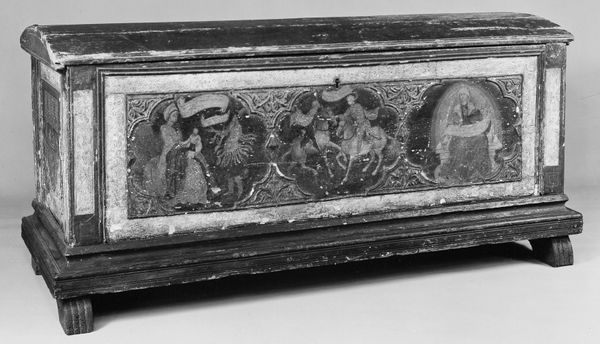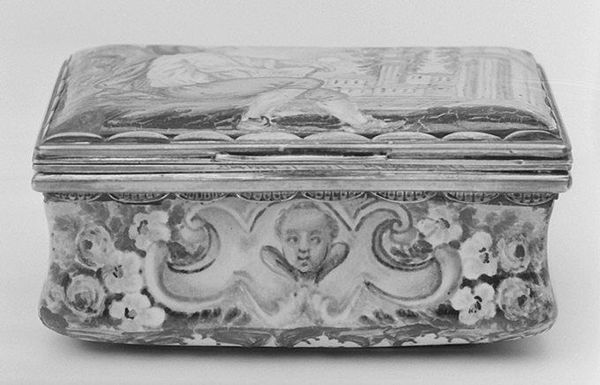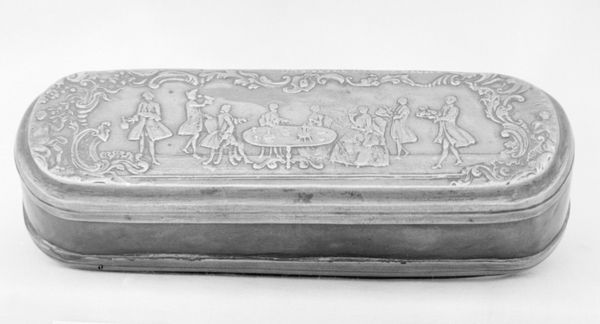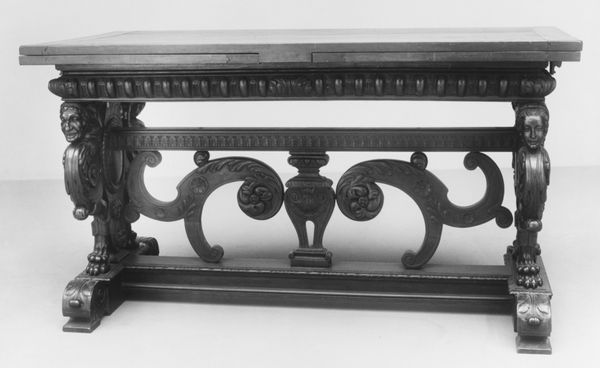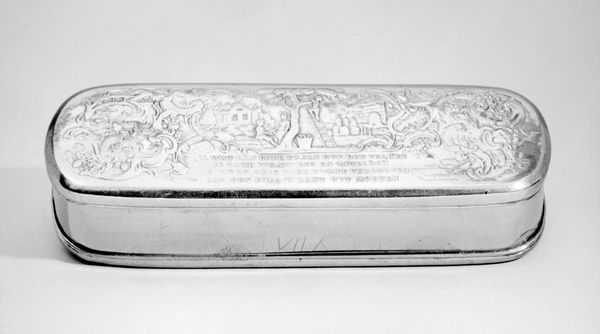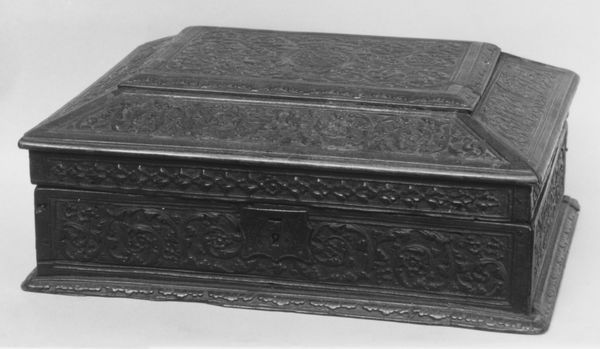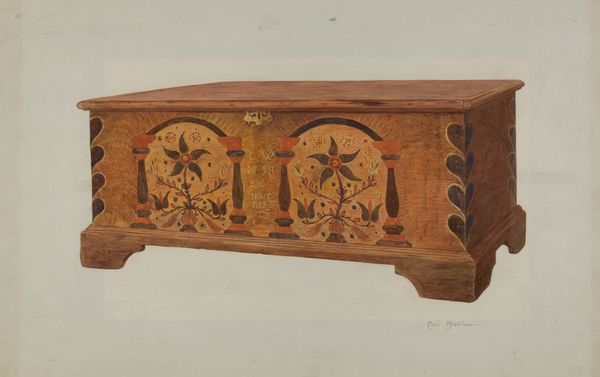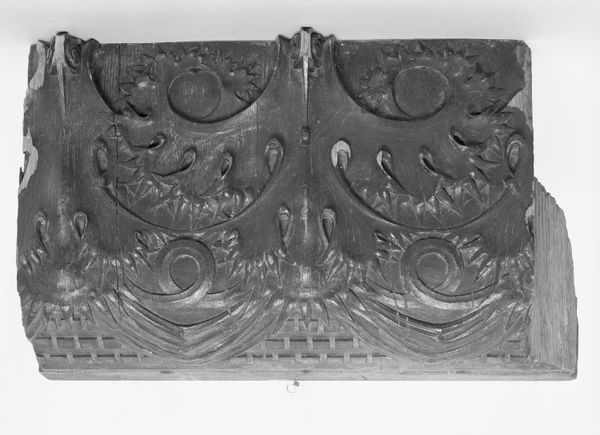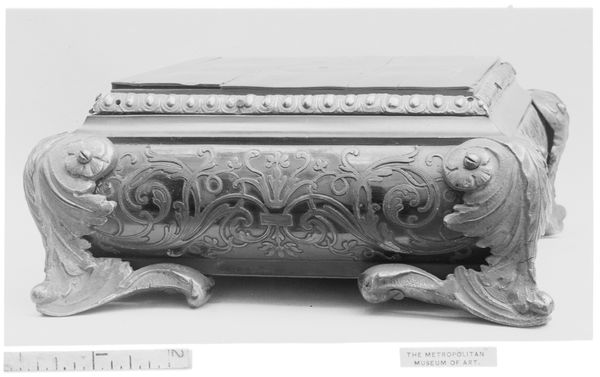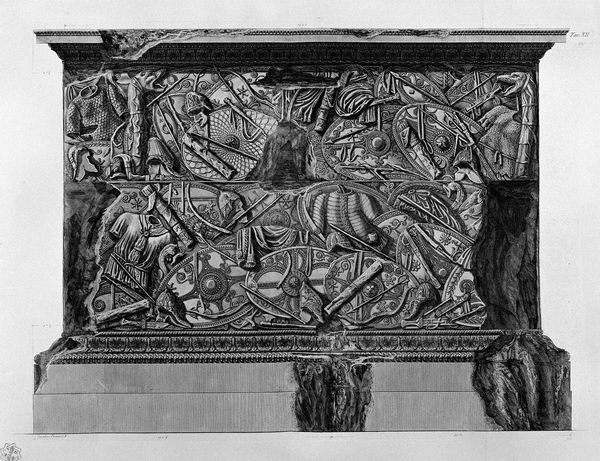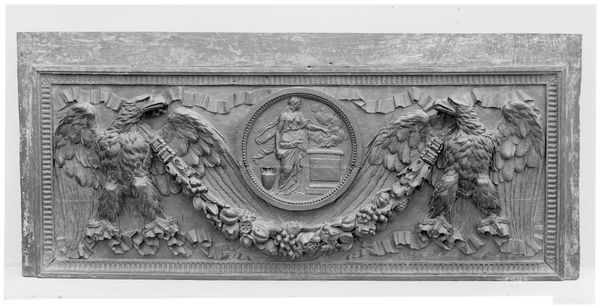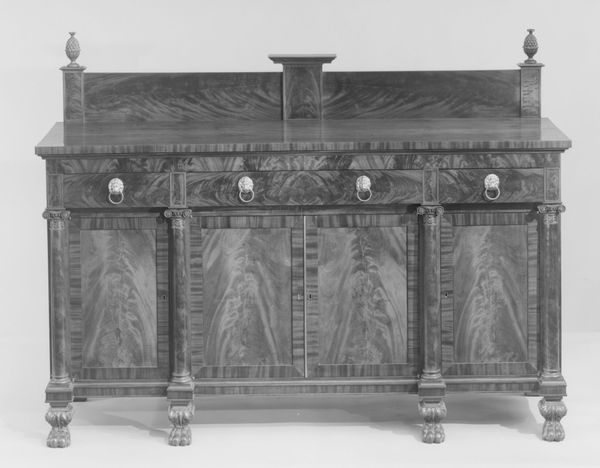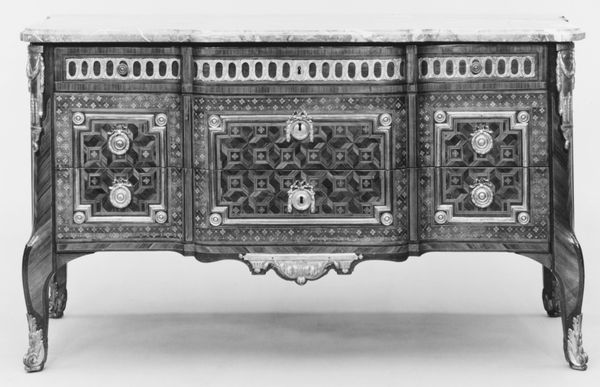
tempera, painting, wood
#
medieval
#
tempera
#
painting
#
furniture
#
figuration
#
men
#
wood
#
history-painting
#
decorative-art
#
italian-renaissance
Dimensions: 29 1/2 × 62 1/4 × 23 3/4 in. (74.9 × 158.1 × 60.3 cm)
Copyright: Public Domain
Editor: This intriguing "Cassone," one of a pair created between 1425 and 1450 by an anonymous artist, is fashioned from wood and tempera, currently residing at The Met. It strikes me as a vibrant historical tableau despite its age. What narratives or cultural nuances do you perceive within the iconography of this piece? Curator: I see more than just a vibrant scene; it’s a carefully coded message. Consider the "Cassone"'s function: a marriage chest. These weren’t just storage; they were visual pronouncements of lineage and aspiration. The scenes depicted likely portray a historical or mythological narrative, acting as a symbolic guide for the couple’s journey. Do you notice how the figures interact with each other? Editor: Yes, there's a dynamic energy, almost theatrical. The characters are actively engaging with each other and their surroundings. It feels deliberate. Curator: Precisely. These aren't passive portraits, they are active participants within a consciously crafted world, reflecting virtues that the couple was expected to embody, or warnings against certain follies. This chest acts as a reminder of the societal roles, expectations, and moral framework within which the marriage would exist. Do you feel it transmits a sense of cultural continuity, binding the couple to the history of their people? Editor: I hadn’t considered it that way, but it makes perfect sense. It is meant to teach them about history. So the "Cassone" is an aesthetic object but also something more like an heirloom containing psychological, even ancestral weight? Curator: Indeed, this chest isn't simply about storage; it's about memory and identity. This form of decorative art freezes aspects of social history, inviting the modern gaze to see the rich semiotic system embedded in a functional object. Editor: I had assumed its value came primarily from the craftsmanship. I now see how this box held immense cultural capital. Curator: And by extension reveals how visual art then could simultaneously uphold traditional views and shape new individual futures.
Comments
No comments
Be the first to comment and join the conversation on the ultimate creative platform.
